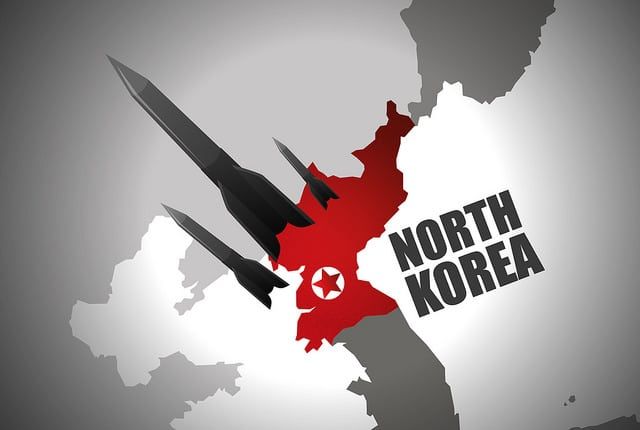The merits of an unconventional approach
By Alexandra Bell | June 12, 2018

We’ve come a long way since 2007, when then-Senator Barack Obama was roundly chastised for saying he would meet with the leaders of Iran, Syria, Venezuela, Cuba, and North Korea during a presidential primary debate.Then-Senators Hillary Clinton and John McCain called it “naive” and “reckless.” President George W. Bush said that meeting with despots and dictators could “send chilling signals and messages to our allies,” adding that such interactions could “send confusion about our foreign policy.”
The American public, it seemed, was not taken aback by the suggestion that we could meet with leaders that might pose a threat to this nation. Upon his election, President Obama did, in fact, seek to engage those very leaders. He was driven, he said, by the actions of Presidents Reagan and Kennedy who spoke to the Soviets even in the darkest of times. “They understood,” he said, “that we may not trust them, they may pose an extraordinary danger to this country, but we have the obligation to find areas where we can potentially move forward.”
Obama’s initiative to forge a nuclear deal with Iran received a substantial amount of criticism, but he pressed ahead anyway, balancing the risk of public and political failure with potential breakthroughs on a long-standing nuclear challenge.
Fast forward to today and President Donald Trump has just sat down with the leader of a repressive, despotic, and nuclear-armed regime. So popular was this move among Republican party leaders that 18 of them sent a letter to the Nobel Committee nominating the Trump for the 2019 Nobel Peace Prize—before a meeting date was even set between the United States and North Korea. In the hours that followed the summit, President Trump basked in what he perceived to be the glory of the moment, and many of his supporters were happy to oblige his need for adulation.
One reaction to this political whiplash is to scream into the infinite void of time and space. Another is to be grateful that perhaps we can now all agree, regardless of party, that we need to talk to the leaders of countries that might threaten us with nuclear harm.
It is unclear if President Trump knew the full implications of accepting a meeting with Kim or the fact that a direct meeting with the leader of the United States was a prize three generations in the making. It is also unclear if President Trump had a grand design for a nuclear agreement with North Korea in mind all along, or if he was equally willing to go to war. Regardless of the underlying impetus, the president has shown he is not encumbered by the foreign policy status quo or it would seem, Congressional oversight. Because of his unprecedented actions—coupled with a few essential variables, including Kim’s confidence in his nuclear deterrent and South Korean President Moon Jae-in’s commitment to diplomacy—there is now an opportunity to forge a real and lasting nuclear agreement.
We have the tools necessary to negotiate such a deal. The United States has been working on the creation and implementation of arms control and nonproliferation agreements for more than 60 years. Make no mistake, the United States has the most formidable nuclear negotiating team in the world. Think the 1992 Dream Team, but instead of basketball players, it is a group of the most skilled lawyers, policy experts, engineers, and physicists in the world… and Dennis Rodman is nowhere to be found.
Turning the aspirational goals of the Trump-Kim Joint Statement into an actionable plan will not be easy, but I have a lot of faith in my former colleagues at the departments of State, Defense, and Energy. After all, they helped create and implement the Joint Comprehensive Plan of Action with Iran, which despite what the President says, is a solid nuclear agreement.
What is less certain is whether the current US leadership has the discipline to turn this unconventional diplomatic opportunity into a lasting solution. Indeed, unconventional approaches can change the status quo, but those approaches cannot overcome the technical, political, and legal barriers present in every nuclear challenge.
This is not the first time a president’s unconventional approach, aided by the confluence of events and circumstances, has opened a new path. Presidents Kennedy, Reagan, and Obama all successfully converted their overtures into actions and came away with nuclear agreements to show for their efforts.
For President Trump, there is still a long road ahead. He will only reach the end if he directs efforts away from the high-profile photo ops and megaphone diplomacy and towards an intensive and inevitably tedious process led by technocrats. Propaganda videos like the one that he showed at the Singapore Summit are no substitute for good, old-fashioned technocratic nuclear negotiations.
As someone who hopes to see more progress on nuclear arms control and nonproliferation in the future, I will also be sure to remind people of this moment in the future. Many pundits and politicians are lauding the president’s unprecedented actions today. They should remember those cheers when a future Democratic President takes a risk in order to make progress in reducing the nuclear threats facing this nation.
Together, we make the world safer.
The Bulletin elevates expert voices above the noise. But as an independent nonprofit organization, our operations depend on the support of readers like you. Help us continue to deliver quality journalism that holds leaders accountable. Your support of our work at any level is important. In return, we promise our coverage will be understandable, influential, vigilant, solution-oriented, and fair-minded. Together we can make a difference.
Topics: Uncategorized















